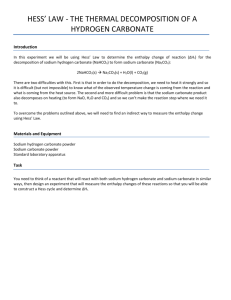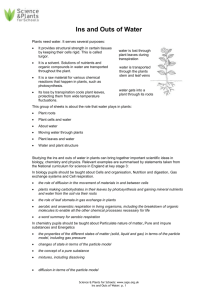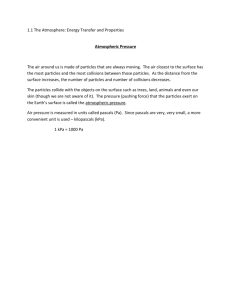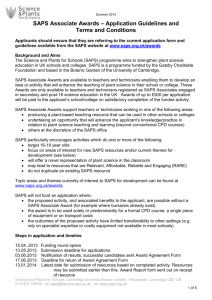3 About water - teachers notes - Science and Plants for Schools
advertisement
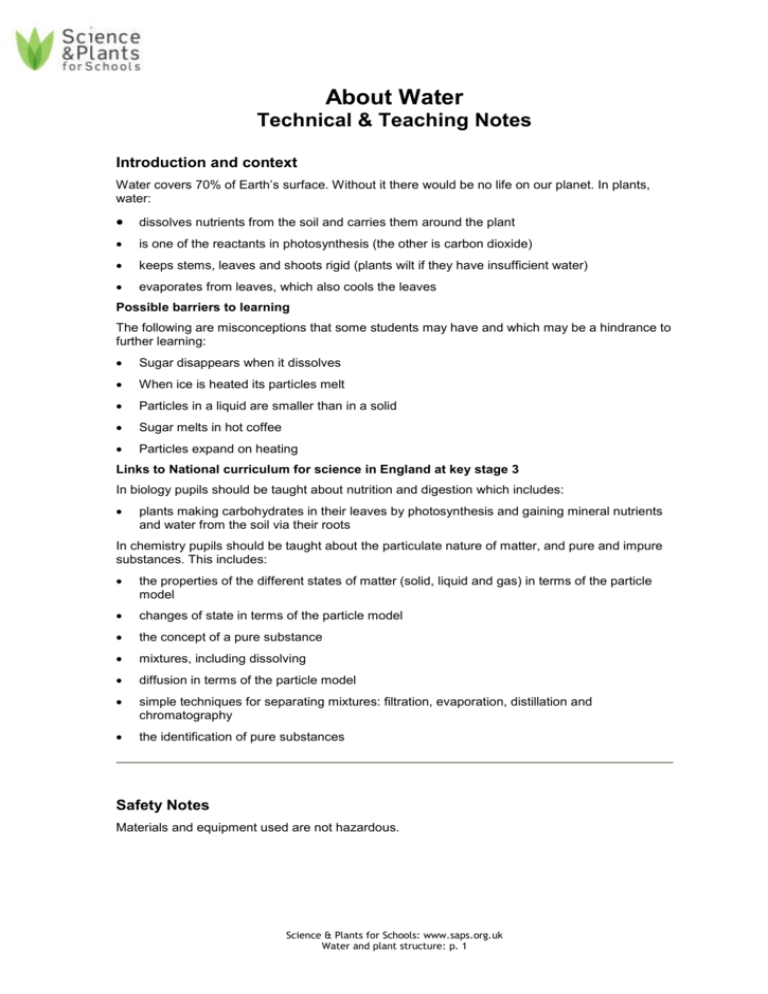
About Water Technical & Teaching Notes Introduction and context Water covers 70% of Earth’s surface. Without it there would be no life on our planet. In plants, water: dissolves nutrients from the soil and carries them around the plant is one of the reactants in photosynthesis (the other is carbon dioxide) keeps stems, leaves and shoots rigid (plants wilt if they have insufficient water) evaporates from leaves, which also cools the leaves Possible barriers to learning The following are misconceptions that some students may have and which may be a hindrance to further learning: Sugar disappears when it dissolves When ice is heated its particles melt Particles in a liquid are smaller than in a solid Sugar melts in hot coffee Particles expand on heating Links to National curriculum for science in England at key stage 3 In biology pupils should be taught about nutrition and digestion which includes: plants making carbohydrates in their leaves by photosynthesis and gaining mineral nutrients and water from the soil via their roots In chemistry pupils should be taught about the particulate nature of matter, and pure and impure substances. This includes: the properties of the different states of matter (solid, liquid and gas) in terms of the particle model changes of state in terms of the particle model the concept of a pure substance mixtures, including dissolving diffusion in terms of the particle model simple techniques for separating mixtures: filtration, evaporation, distillation and chromatography the identification of pure substances Safety Notes Materials and equipment used are not hazardous. Science & Plants for Schools: www.saps.org.uk Water and plant structure: p. 1 Apparatus Activity 2: Changes of state Each student or pair will need: sheet of paper towel water digital thermometer (other temperature probes could be used) fan or hair dryer stopwatch (If available, temperature changes over time could be monitored continuously using a datalogger or a probe interfaced with a suitable computer programme) Activity 3: Solvent properties Each student or pair will need: some earth (make sure that it does not contain anything sharp or otherwise hazardous; seed compost could be used as an alternative) sodium hydrogen carbonate (baking soda) blue food colouring (other colours could be used but blue is easy to see in the absorbent paper) 1 mol dm-3 hydrochloric acid (LOW HAZARD) 2 x 250 cm3 beakers (glasses of similar volumes could be used) wood block, or similar, to support one of the beakers sheet of paper towel (this can usually be rolled up tightly, but it may be handy to have some small elastic bands available if it starts to uncurl) Teaching Notes Activity 1: Structure of water Students should be familiar with the simple particle model of matter. Spend some time reminding them. Answers 1. (a) hydrogen and oxygen (b) 2H and 1O 2. (a) ρ = m/V; V = m/ρ So 1.000 g of ice has volume 1.000/0.917 = 1.091 cm 3 and 1.000 g of water has volume 1.000/1.000 = 1.000 cm 3. Therefore, ice has the largest volume. It may not be necessary to go through the calculations as some students may recognise immediately that for the same mass the material with lowest density will occupy the greater volume. However, this does give practice in changing the subject of an equation (b) water molecules in ice are not packed together quite as closely as they are in water – this is somewhat unusual as most solids increase very slightly in volume when they melt. Science & Plants for Schools: www.saps.org.uk Water and plant structure: p. 2 3. Density / g/cm3 Temperature / oC (a) The graph shows a dramatic increase from 0 oC to 1 oC and then decreases; the rate of decrease gets gradually greater. (b) The distance between water molecules in liquid water gradually increases (emphasis that it is a very small but discernible change) (c) As the temperature rises the water molecules have greater kinetic energy and, therefore, are moving faster. This means they collide with one another more frequently. The result is that they are not quite as close together. 4. (a) 1 cm3 of water has mass 1 g and, therefore, produces 1 g of water vapour. Density of water vapour = 0.0006 g/cm 3 Using V = m/ρ (see answer to 2.) V = 1/0.0006 = 1700 cm 3 (to 2 significant figures) (b) Using d = 3√(volume of water vapour / volume of water) d = 3√1700/1 = 11.9 = 12 (to 2 significant figures) So water molecules are 12 time further apart in water vapour than in water. 5. Diagrams and descriptions similar to the ones they use for the simple particle model, but with a refinement that shows the relative distances. Activity 2: Changes of state Water evaporates very slowly at room temperature, making temperature changes difficult to measure (as soon as energy is transferred from the immediate surroundings they warm up again by transfer of energy from the surroundings a little further away (by conduction, convection or radiation). A fan is used to speed up evaporation. It is also helpful if the water is about 30-35 oC initially as it evaporates faster at higher temperatures. However, students may think that the temperature drop is due simply to the water cooling. A second experiment not using a fan will show that this does not produce the same magnitude of change as when a fan is used. Answers 1. Students should observe a drop in temperature, consist with an endothermic reaction (energy transferred from the surroundings). 2. The description should include the idea that particles are constantly moving around and that at the surface of the liquid, those with sufficient kinetic energy can escape from the pull of other particles in the liquid. Key to this is the idea that not all particles have the same kinetic energy, some have less and others have more than the average. Science & Plants for Schools: www.saps.org.uk Water and plant structure: p. 3 3. Transpiration produces water in plant cells. This diffuses out of the cells and collects near the surface of a leaf. It evaporates to form water vapour which can escape through stomata. It is this evaporation that helps to cool the leaves. Activity 3: Solvent properties Students should be familiar with the idea of solutes, solvents and solutions. Remind them if necessary. You might also want to discuss briefly the idea of ‘model’ experiments in science – ones that mimic real processes but allow greater control of variables. In the experiment student should observe: Water slowly rises up the absorbent paper. The addition of food colouring makes this easier to see, but if you think that the presence of the food colouring might be confusing students can still see the movement of colourless water in they look closely. After a while (usually a few minutes) liquid begins dripping into the lower beaker. Liquid is clear blue. Adding dilute hydrochloric acid to the liquid makes it effervesce, showing the presence of sodium hydrogen carbonate. Note: You may want to demonstrate the reaction using a solution of sodium hydrogen carbonate. Other soluble salts could be used, e.g. sodium chloride (using silver nitrate solution to identify it) or sodium sulfate (using barium chloride solution to identify it). From these observations students should be able to conclude that substances which are soluble in water, such as sodium hydrogen carbonate and blue food colouring, dissolve in water and the solution is drawn up into the absorbent paper. Insoluble materials are not taken up. Science & Plants for Schools: www.saps.org.uk Water and plant structure: p. 4


